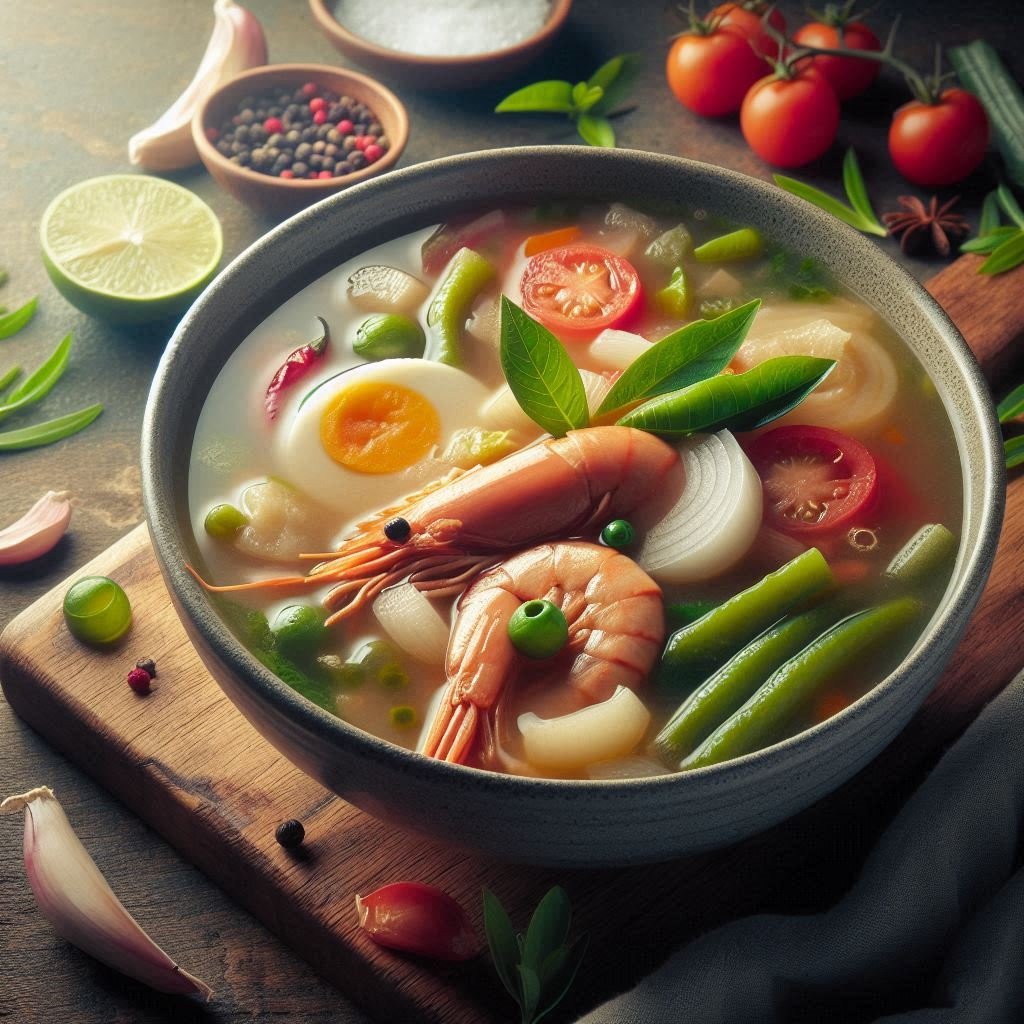Sinigang is a quintessential dish in Filipino cuisine, renowned for its distinctive sour flavor and comforting qualities. This traditional soup has been a staple in Filipino households for generations, offering a perfect balance of tangy and savory notes. Sinigang’s popularity extends beyond the Philippines, as it has gained recognition in various parts of the world where Filipino communities have settled. The dish’s versatility in ingredients and cooking methods has contributed to its enduring appeal across different regions of the Philippines and among food enthusiasts globally.
Historical and Cultural Significance
Origins and Evolution
The exact origins of sinigang are difficult to trace, but it is believed to have been developed centuries ago in the Philippine archipelago. The soup’s creation likely stems from the abundance of tamarind in the region, which serves as the primary souring agent in many variations of sinigang. Over time, the dish has evolved to incorporate various regional ingredients and cooking techniques, resulting in numerous adaptations across different Filipino provinces. Despite these variations, the core concept of a sour soup remains consistent, highlighting the dish’s cultural importance and adaptability.
Cultural Importance
Sinigang holds a special place in Filipino culinary tradition, often considered a comfort food that evokes feelings of home and family. It is frequently served during family gatherings, celebrations, and even as a remedy for minor illnesses due to its warm and nourishing properties. The dish’s significance extends beyond mere sustenance, as it represents the Filipino value of resourcefulness in utilizing locally available ingredients. Sinigang’s popularity has also made it a cultural ambassador, introducing Filipino flavors to international audiences and serving as a point of pride for the Filipino diaspora.
Ingredients and Preparation
Key Components
Sinigang typically consists of the following elements:
- Protein: Pork, beef, fish, or shrimp
- Vegetables: Tomatoes, onions, water spinach (kangkong), radish, eggplant
- Souring agent: Tamarind, calamansi, green mango, or kamias
- Broth: Water or stock
- Seasonings: Salt, pepper, and fish sauce (patis)
The choice of ingredients can vary based on regional preferences, availability, and personal taste. This flexibility allows for numerous variations of the dish while maintaining its essential sour profile.
Preparation Methods
The preparation of sinigang follows a general process, though specific techniques may differ:
- Sauté aromatics (onions, garlic, and tomatoes) in a pot
- Add the protein and brown slightly
- Pour in water or stock and bring to a boil
- Add the souring agent and simmer until the meat is tender
- Include vegetables, starting with those that require longer cooking times
- Season to taste and serve hot
Cooking times may vary depending on the protein used, with fish and shrimp versions requiring less time than meat-based sinigang.
Regional Variations
Sinigang’s popularity across the Philippines has led to numerous regional adaptations. Here’s a table highlighting some notable variations:
| Region | Variation | Unique Characteristics |
|---|---|---|
| Ilocos | Sinigang na Bangus | Uses milkfish and tomatoes as souring agents |
| Pampanga | Sinigang Kapampangan | Incorporates guava for a sweeter-sour taste |
| Bicol | Sinampalukang Manok | Chicken-based with young tamarind leaves |
| Visayas | Kansi | Beef shanks with lemongrass and jackfruit |
| Mindanao | Sinanglay | Fish wrapped in pechay leaves, cooked in sour broth |
These variations showcase the diverse culinary landscape of the Philippines and the adaptability of sinigang to local tastes and available ingredients.
Nutritional Value and Health Benefits
Sinigang offers several nutritional benefits, making it a relatively healthy option in Filipino cuisine. The soup is generally low in calories and fat, especially when prepared with lean proteins and a variety of vegetables. Here’s a breakdown of the potential health benefits:
- High in Vitamin C from the souring agents and vegetables
- Good source of protein, depending on the choice of meat or seafood
- Rich in various minerals and vitamins from the diverse vegetable content
- Hydrating due to its broth-based nature
- Potentially beneficial for digestion, thanks to its sour components
While the exact nutritional content can vary based on specific ingredients and preparation methods, sinigang generally provides a balanced meal option when consumed as part of a diverse diet.
Global Recognition and Modern Interpretations
As Filipino cuisine gains more international recognition, sinigang has emerged as one of its most popular representatives. Chefs around the world, including those of Filipino descent, have begun incorporating sinigang flavors into fusion dishes and modern interpretations. These creative adaptations include:
- Sinigang-inspired cocktails
- Sinigang-flavored chips and snacks
- Gourmet versions featuring luxury ingredients like lobster or wagyu beef
- Vegan and vegetarian adaptations to cater to different dietary preferences
These modern takes on sinigang demonstrate the dish’s versatility and appeal to a global palate while maintaining its essential Filipino character.
Conclusion
Sinigang stands as a testament to the rich culinary heritage of the Philippines. Its tangy flavor profile, versatility, and comforting qualities have ensured its place as a beloved dish both within the Philippines and among Filipino communities worldwide. As Filipino cuisine continues to gain international recognition, sinigang serves as an excellent ambassador, introducing the unique flavors and culinary traditions of the Philippines to a global audience. Whether enjoyed in its traditional form or through modern interpretations, sinigang remains an integral part of Filipino food culture, embodying the nation’s history, diversity, and culinary ingenuity.
Disclaimer: While every effort has been made to ensure the accuracy of the information presented in this article, culinary traditions and recipes can vary significantly across regions and households. Readers are encouraged to explore various sources and personal experiences to gain a comprehensive understanding of sinigang and its cultural significance. Please report any inaccuracies so we can correct them promptly.




